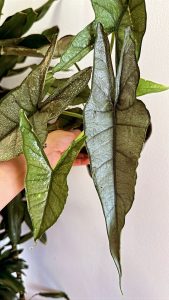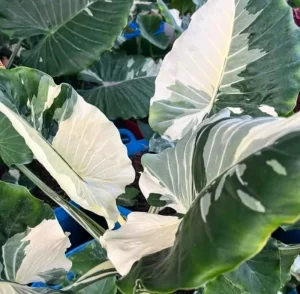- English
- Chinese
- French
- German
- Portuguese
- Spanish
- Russian
- Japanese
- Korean
- Arabic
- Irish
- Greek
- Turkish
- Italian
- Danish
- Romanian
- Indonesian
- Czech
- Afrikaans
- Swedish
- Polish
- Basque
- Catalan
- Esperanto
- Hindi
- Lao
- Albanian
- Amharic
- Armenian
- Azerbaijani
- Belarusian
- Bengali
- Bosnian
- Bulgarian
- Cebuano
- Chichewa
- Corsican
- Croatian
- Dutch
- Estonian
- Filipino
- Finnish
- Frisian
- Galician
- Georgian
- Gujarati
- Haitian
- Hausa
- Hawaiian
- Hebrew
- Hmong
- Hungarian
- Icelandic
- Igbo
- Javanese
- Kannada
- Kazakh
- Khmer
- Kurdish
- Kyrgyz
- Latin
- Latvian
- Lithuanian
- Luxembou..
- Macedonian
- Malagasy
- Malay
- Malayalam
- Maltese
- Maori
- Marathi
- Mongolian
- Burmese
- Nepali
- Norwegian
- Pashto
- Persian
- Punjabi
- Serbian
- Sesotho
- Sinhala
- Slovak
- Slovenian
- Somali
- Samoan
- Scots Gaelic
- Shona
- Sindhi
- Sundanese
- Swahili
- Tajik
- Tamil
- Telugu
- Thai
- Ukrainian
- Urdu
- Uzbek
- Vietnamese
- Welsh
- Xhosa
- Yiddish
- Yoruba
- Zulu
- Kinyarwanda
- Tatar
- Oriya
- Turkmen
- Uyghur

Many gardeners now like Alocasia Calidora because of its distinctive leaf form and pleasing colours. Still, these plants need the perfect soil in addition to the correct light and humidity if they are to flourish at home. Plants’ lifeblood is soil, which supplies them water, nutrients, and support required for growth.

Alocasia Plant Natural Habitat
Alocasia Calidora suitable soil type requires initial knowledge of their native environment. Usually growing in humid woodland environments, alocasia plants are natural in tropical and subtropical climates. Usually rich in organic matter, well-drained, and able to stay very damp, these conditions provide for These soil qualities provide Alocasia plants perfect growth circumstances so they may collect enough water and nutrients in a humid area without developing root rot brought on by waterlogging.
Perfect soil drainage
One of the important considerations when selecting soil for Alocasia plants is drainage. Though their roots are not tolerant to waterlogging, alocasia plants are highly sought after. Poorly drained soil will cause extra water to be retained around the roots, depriving the roots of oxygen and hence fostering root rot and plant death. For Alocasia plants, therefore, it is crucial to choose soil with sufficient drainage.
Mixing many substrates helps to improve the drainage qualities of the soil, therefore defining a perfect soil formula. You may use gritty sand, coconut coir, and peat moss. This combination not only offers a modest water retention capacity but also rapidly eliminates extra water and avoids too lengthy retention of water in the ground. Mixing substrates of various materials will provide a soil condition that is both water-retaining and well-drained, thereby offering a good basis for Alocasia plants.
Value of organic stuff
Usually in the native environment of Alocasia plants, the soil is rich in organic materials. Consequently, in home cultivation, it is rather crucial to provide Alocasia plants soil high in organic matter. Apart from supplying the required nutrients for the plant, organic matter enhances the structure of the soil, therefore increasing its loosenability and breathability. Furthermore, organic matter maintains a constant humidity level and helps the soil retain moisture.
To raise the organic matter content in the soil, toss in leaf mould or well-rotted organic compost. Rich nutrients released by these natural materials will enable plants to absorb and make use of them throughout their decompose process. Simultaneously, organic matter may boost the good growth of the root system and raise the microbial activity of the soil. Increasing the organic matter level in the soil will help you to establish a soil environment more in line with Alocasia plant habitat and encourage their healthy development.
PH of Soil
Alocasia plants have specific pH range needs for the soil. Usually, they favour a somewhat acidic soil condition. Moderate acidity may boost plant growth vigour and help absorption of nutrients. Should the pH of the soil be unsuitable, inadequate nutrient absorption might follow, therefore influencing the plant’s development and condition.
You may include certain acidic elements, like peat moss or pine needles, to the soil to preserve the suitable pH of it. These components may assist the soil’s pH be more in accordance with Alocasia plant development requirements by means of adjustment. Should the pH of the soil be very high, you might apply aluminium sulphate or certain acidic fertilisers to bring the pH down. An crucial step to guarantee the healthy development of Alocasia plants is routinely checking the pH of the soil and modifying it as necessary.
Groundability and root health
Alocasia plants’ roots must be well ventilated if they are to develop normally. Should the soil be too compact, the roots will struggle to get sufficient oxygen, which might cause root rot or even stop of development. Alocasia plants so depend on selecting soil with appropriate permeability.
Some loose elements, including perlite or vermiculite, may be included to the soil to raise its permeability. These materials not only raise the soil’s permeability but also aid to preserve reasonable moisture so as to avoid either too dry or excessively wet conditions. Maintaining soil permeability also depends critically on frequent loosening of the ground. Gentle surface soil moving helps to increase air circulation and encourage the healthy root system development.
Nutrient availability in the ground
Particularly in the growth season, alocasia plants are more sought for in nutrients. Consequently, the development of plants depends much on the nutrient availability in the soil. Apart from selecting soil rich in organic matter, you can also frequently apply the suitable quantity of fertiliser to satisfy the development demands of Alocasia plants, therefore ensuring enough nutrients for them.
To provide a balanced spectrum of nutrients including nitrogen, phosphorous, and potassium, you may use a balanced slow-release fertiliser when fertilising. Furthermore, the frequency of fertiliser treatment may be suitably raised in the growing season to assist the fast expansion of the plant. Care must be taken, nevertheless, to avoid overfertilization during the fertilisation process so as to prevent too much nutrients from damaging the plant. Alocasia plants may keep healthy leaves and a robust root system by means of an adequate supply of nutrients, therefore encouraging their general development.
Different Alocasia cultivars’ soil requirements
Although Alocasia plants have many things in common in terms of soil needs, there might also be some variations in the particular soil requirements of many variants of Alocasia plants. Certain types could, for instance, grow well in somewhat damp soils while others might favour soils with great drainage. Consequently, it is rather crucial to know the particular requirements of the type you are growing while selecting soil.
Planting a more moisture-tolerant species allows you to choose a somewhat damp soil and guarantee reasonable drainage. If you are growing a variety with great drought tolerance, you should use a soil with superior drainage to prevent too much water building in the ground. Furthermore influencing their demands for soil might be the development patterns of many variants. Thus, knowing and adjusting to the particular requirements of various types would enable one to better tend to these plants.
Inside gardening and soil management
Alocasia plants grown indoors depend especially on good soil management. The constraints of the interior environment call for more careful handling of the drainage, air permeability, nutrient delivery of the soil. Ensuring successful indoor planting mostly depends on selecting the appropriate flower container, changing the soil formula, and routinely monitoring the soil condition.
Selecting a flower container with drainage holes at the bottom will help you to prevent inadequate soil drainage during indoor planting by enabling the discharge of extra water in time. To enhance the drainage effect even more at the same time, cover the bottom of the flower pot with pebbles or ceramites. Regarding soil formula, the ratio of air permeable materials may be suitably raised to guarantee the good growth of the root system. Important steps to guarantee the success of indoor planting are also routinely evaluating the moisture and nutritional condition of the soil and augmenting and modifying as necessary.

Ensuring the healthy development of Alocasia plants depends on selecting the appropriate soil type. Understanding the soil properties in its native habitat as well as the particular requirements of various types helps you to create the perfect growth environment for the plant. Choosing well-drained, rich in organic matter, somewhat acidic, well-aerated soil can assist alocasia plants flourish in home growing. Alocasia plants may not only exhibit their special beauty but also preserve long-term health and vitality by means of scientific soil management and an appropriate supply of nutrients.
Previous News
Light requirements for Alocasia Dark StarNext News
Temperature requirements for Alocasia Dark Star


